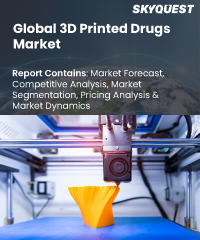
Product ID: SQMIG35I2140

Report ID:
SQMIG35I2140 |
Region:
Global |
Published Date: April, 2024
Pages:
219
|
Tables:
91 |
Figures:
76
The global 3D printed drugs market is very competitive in nature owing to various strategies including partnerships through geographical expansion, mergers and acquisitions, and strategic collaborations to expand their market presence. The business manufactures a variety of prescription drugs and vaccinations. The pharmaceutical industry finds, creates, and sells drugs to treat both acute and chronic illnesses. The vaccines industry offers vaccinations for individuals of all ages, from infants and adolescents to adults and senior citizens. Its product line includes HIV and respiratory medications. Respiratory, HIV, Specialty Products, and Classic and Established Products are all part of its pharmaceuticals division. Over 40 vaccinations for children, adolescents, adults, older adults, and travellers are included in the company's vaccine portfolio.
3D Printed Drugs Market Top Player’s Company Profiles
3D Printed Drugs Market
Our industry expert will work with you to provide you with customized data in a short amount of time.
REQUEST FREE CUSTOMIZATIONWant to customize this report? This report can be personalized according to your needs. Our analysts and industry experts will work directly with you to understand your requirements and provide you with customized data in a short amount of time. We offer $1000 worth of FREE customization at the time of purchase.

Product ID: SQMIG35I2140